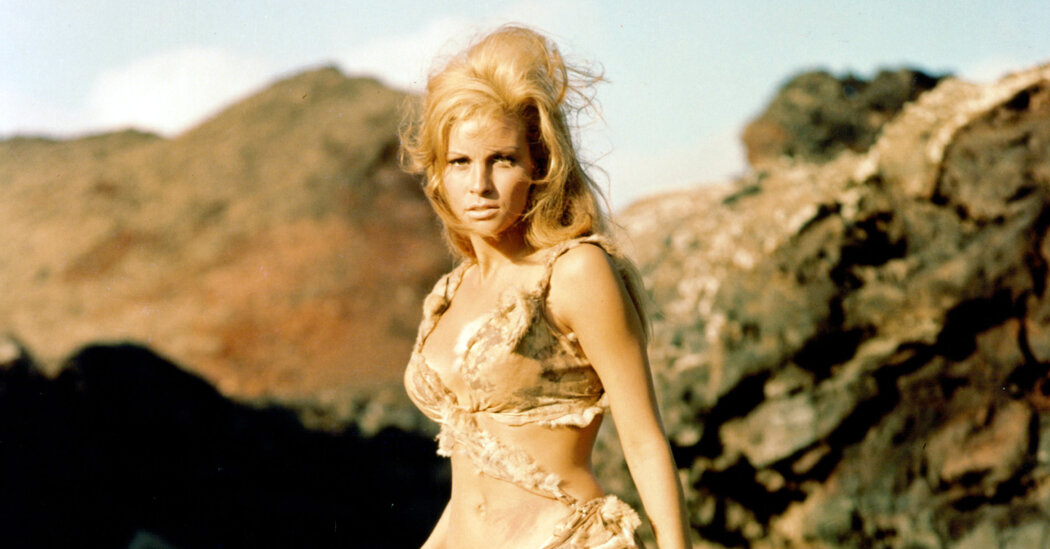
Raquel Welch rose to prominence with the B-movie epic “One Million Years B.C.,” a film in which early human beings are seen battling a menagerie of creatures, including triceratops, brontosaurus and wild boars.
The shoot gave her something of a rude awakening. As Ms. Welch recalled in her 2010 memoir, “Raquel: Beyond the Cleavage,” she approached the director, Don Chaffey, on her first day and said, “Listen, Don, I’ve been studying the script and I’ve been thinking — ”
He cut her off. “You were thinking?” he said. “Don’t.”
“He was the first in a long line of producers and directors who didn’t give a rat’s ass what I thought,” Ms. Welch wrote. “For years, I felt like the Rodney Dangerfield of sex symbols. I got no respect.”
“One Million Years B.C.” may have been ludicrous, but it made her a star, largely because of the film poster, which depicted her as an indomitable figure towering over the fearsome beasts in the background. Ms. Welch understood the power of the image, writing, “In the photograph I look so convincing, so formidable standing there astride the rocky landscape in that partially shredded animal skin.”
She was invariably described as a sex symbol, though she never posed nude for the camera in any film or photo shoot, despite the efforts of Playboy magazine and various producers. She had a key role in “Bandolero!” alongside Jimmy Stewart and Dean Martin and went on to play a woman seeking revenge in another western, “Haddie Caulder,” an inspiration for the Quentin Tarantino films “Kill Bill” and “Django Unchained.” After portraying a struggling single mother in the roller derby drama “Kansas City Bomber,” she found a home in the comedic action of a pair of Richard Lester movies, “The Three Musketeers” and its sequel, “The Four Musketeers.”
She moved beyond film sets, developing a nightclub act that played to sold-out crowds in Las Vegas and became the basis for a CBS special, “Really, Raquel.” Through the 1970s, she was a regular on variety shows, singing the same song, “I’m a Woman,” with both Cher on “The Cher Show” and Miss Piggy on “The Muppet Show.”
In 1981, she had a breakthrough when she replaced Lauren Bacall as the star of “Woman of the Year” on Broadway. Writing in The New York Times, the critic Mel Gussow called her a “show stopper,” adding that her performance was “in all respects marked by show-business know-how.” She stayed in the role for two years, her cave woman past a distant memory.






